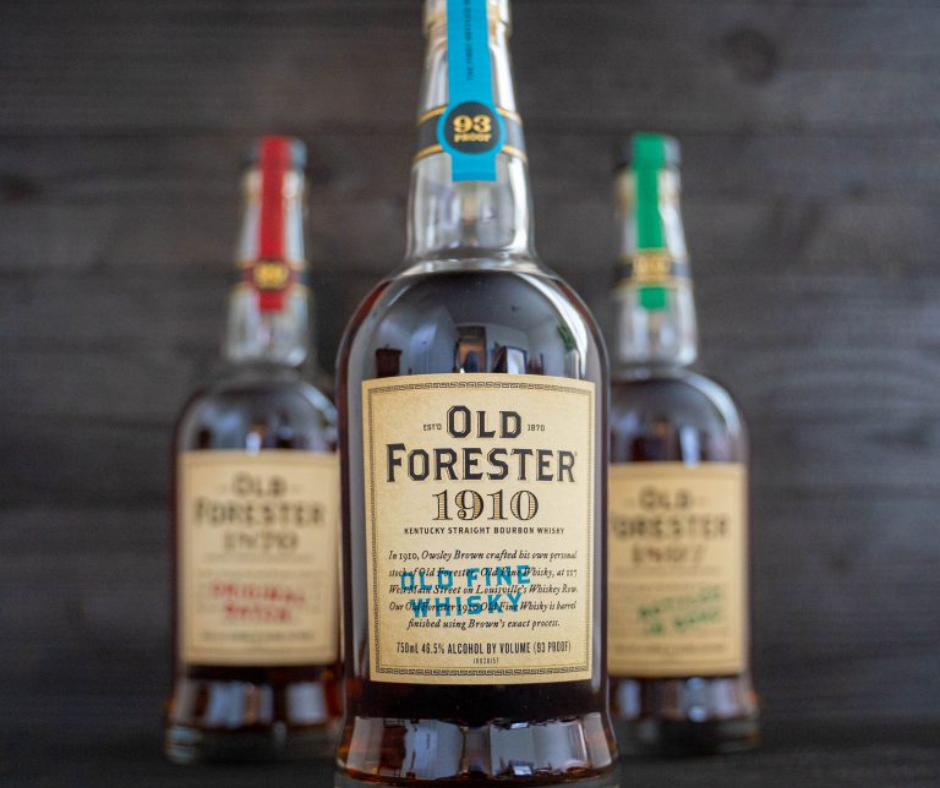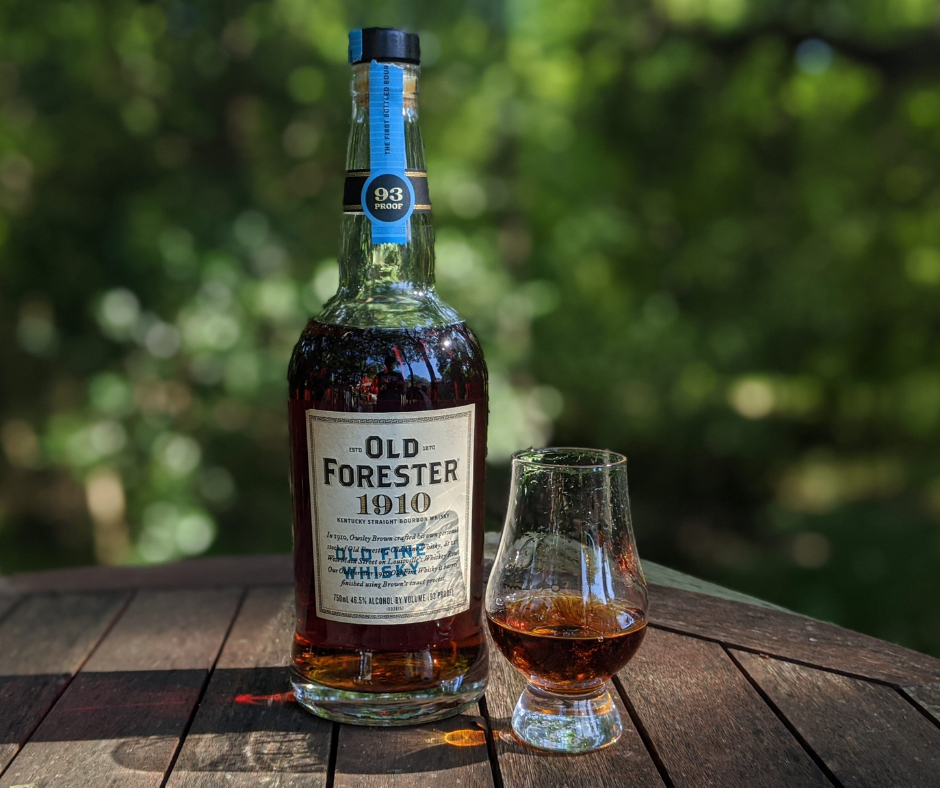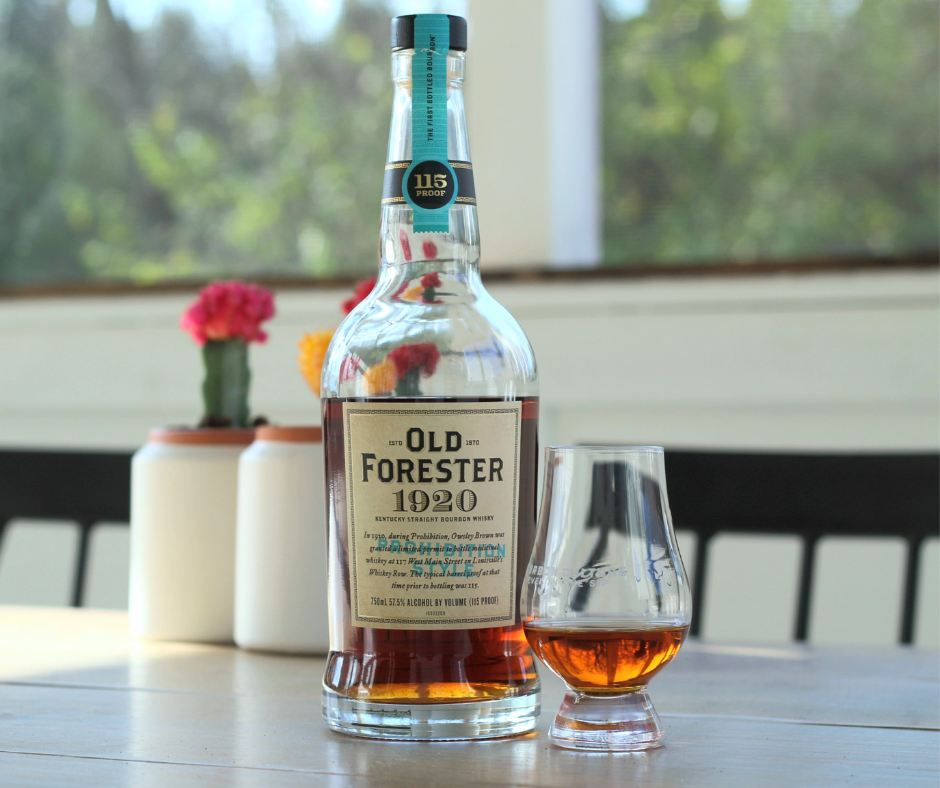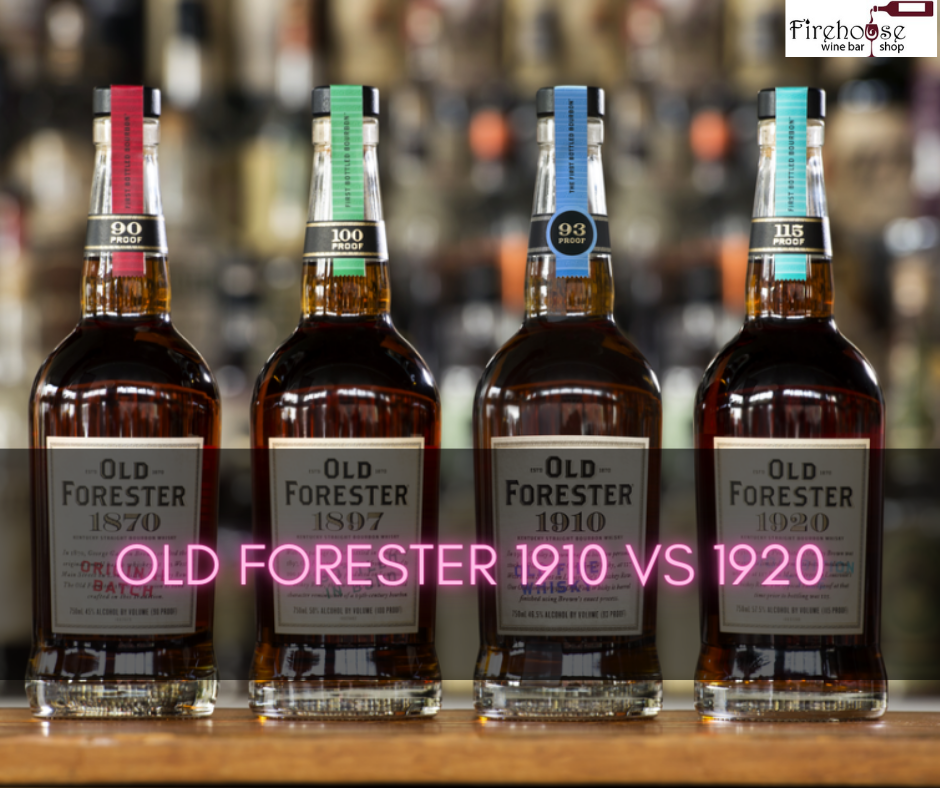Introduction
Regarding premium bourbons, Old Forester is a name that stands out. Their Whiskey Row series has provided a rich and flavorful bourbon experience showcasing their 150 years of distilling expertise. In this blog section, we will compare two popular releases from Old Forester – Old Forester 1910 vs 1920. These two bourbons have garnered attention for their distinct characteristics and exceptional taste profiles.
A Brief Overview Of Old Forester Bourbon
Old Forester is a historic bourbon brand available on the market since its introduction in 1870. It was founded by George Garvin Brown, a young pharmaceutical salesman from Kentucky who recognized the need for a high-quality, unadulterated bourbon. Unlike other distilleries of the time, Brown aged his bourbon in oak casks and bottled it in sealed glass bottles to ensure authenticity and quality. Old Forester has remained a staple in the bourbon industry, even during Prohibition when it was sold for medicinal purposes.
The Significance Of Old Forester 1910 And 1920 Releases
The Old Forester 1910, also known as the “Old Fine Whisky,” holds a special place in Old Forester’s Whiskey Row series. It is a unique bourbon that recreates a specific moment in history when a vat of mature whiskey had to be stored in new charred oak containers due to a bottling line shutdown in October 1910.
This double-barreling process gives the Old Forester 1910 its distinctive flavor profile. It features a mash bill comprised of 72% Corn, 18% Rye, and 10% Malted Barley. With a rating of ⭐⭐⭐⭐, this bourbon offers a pleasant nose with cherry notes, maple syrup, and charred oak. It delivers flavors of cherry, caramel, leather, and charred oak on the palate.
On the other hand, the Old Forester 1920, also known as the “Prohibition Style,” pays homage to the Prohibition era. This release represents the rich flavor and vintage barrel strength that defined the period. It boasts a higher alcohol content, bottled at 115 proof (57.5% ABV), making it bolder, richer, and more flavorful than the Old Forester 1910.
This bourbon offers a sweet nose with caramel, a hint of banana, and rye spice. The palate delivers a delightful combination of vanilla, caramel, brown sugar, and a nutty undertone. The finish is warm and medium in length, with notes of cinnamon, caramel, oak, and spice.
Here’s a table to summarize the key features of Old Forester 1910 and Old Forester 1920:
| Specification | Old Forester 1910 | Old Forester 1920 |
|---|---|---|
| Alcohol Content | 93 proof (46.5% ABV) | 115 proof (57.5% ABV) |
| Mash Bill | 72% Corn, 18% Rye, 10% Malted Barley | 72% Corn, 18% Rye, 10% Malted Barley |
| Flavor Profile | Cherry, Caramel, Leather, Charred Oak | Vanilla, Caramel, Brown Sugar, Nutty Undertone |
| Aging Process | Double-barreling | Traditional aging process |
| Release Year | October 2018 | September 2016 |
In conclusion, Old Forester 1910 and Old Forester 1920 are exceptional bourbons with unique characteristics. The Old Forester 1910 offers a smooth and enjoyable drinking experience with its distinct double-barreling process, while the Old Forester 1920 provides a bolder and more powerful taste. The choice between these two releases ultimately comes down to personal preference and the desired flavor profile. Whether you prefer the dessert-like sweetness of Old Forester 1910 or the punchier flavor of Old Forester 1920, both bourbons are sure to satisfy bourbon enthusiasts.

Old Forester 1910 Vs. 1920 – A Comparison Of Two Old Forester Bourbon Releases
The 1910 and 1920 releases are known for their distinct characteristics and flavors regarding Old Forester bourbons. Let’s look at each bourbon and compare the features of Old Forester 1910 vs. 1920 to help you choose the one that suits your taste.
Old Forester 1910
Tasting notes and flavor profile: Old Forester 1910 is a well-rounded, smooth bourbon with a subtle sweetness. Its nose offers cherry notes, maple syrup, and charred oak. The palate brings a delightful combination of cherry flavor, caramel, vanilla, old leather, and oak. The finish is long and rich, with hints of burnt oak, vanilla, and caramel. Overall, it is a smooth and enjoyable whiskey with warmth on the finish that adds to its character.
The aging process and second barreling: Old Forester 1910 undergoes a unique double-barreling process. To recreate a specific moment in history, when a vat of mature whiskey had to be stored in new charred oak containers due to a bottling line shutdown in October 1910, the whiskey was dumped in heavily charred barrels for a second maturation. This process gives the bourbon its distinctive flavor and character.
Comparative Analysis Of Old Forester 1910
Here’s a comparison table to help you understand the key differences when comparing Old Forester 1910 vs. 1920:
| Specification | Old Forester 1910 | Old Forester 1920 |
|---|---|---|
| Alcohol content | 93 proof (46.5% ABV) | 115 proof (57.5% ABV) |
| Aging process | Double-barreling in heavily charred barrels for a second maturation | Not specified |
| Flavor profile | Subtle sweetness, cherry, caramel, vanilla, old leather, oak | Bolder, richer, more flavorful |
| Price | Approx. $59.99 | Approx. $64.99 |
Old Forester 1910 is a sweeter, dessert-like bourbon with little warmth. This is a safer bet if you’re looking for a smooth and balanced pour with a distinct flavor profile. On the other hand, Old Forester 1920 boasts a higher alcohol proof, making it bolder and punchier. It offers a more demanding and flavorful experience while still being smooth. The choice between these two excellent bourbons ultimately depends on personal preference and the occasion.
So whether you prefer the sweeter and lighter notes of Old Forester 1910 or the bolder and more powerful taste of Old Forester 1920, you can’t go wrong with either choice. Both bourbons have unique characteristics that make them a great addition to any whiskey collection.
Old Forester 1920
Regarding Old Forester bourbons, two popular releases that bourbon enthusiasts often compare are Old Forester 1910 and Old Forester 1920. While whiskey lovers are beloved, both bourbons offer distinct characteristics worth exploring. In this blog post, we will delve into the details of Old Forester 1920 and analyze its flavor, alcohol proof, and how it compares to its counterpart, Old Forester 1910.
Tasting Notes And Flavor Profile Of Old Forester 1920
Old Forester 1920 is a bourbon that boasts a higher alcohol proof than Old Forester 1910, making it bolder, richer, and more flavorful. This bourbon has a delightful combination of flavors that captivate the senses. One can expect a sweet aroma with a rich caramel scent, hints of banana, and a touch of rye spice on the nose. The palate offers a creamy texture that provides a robust mouthfeel.
The flavor profile consists of notes of vanilla, caramel, brown sugar, and a nutty undertone. While there is a noticeable warmth, it is well-balanced and not overpowering. The finish is medium in length, somewhat dry and warm, with a pleasant cinnamon taste lingering on the palate, accompanied by notes of caramel, oak, and a touch of spice.
The Higher Alcohol Proof And Its Impact On Flavor
One of the key differences between Old Forester 1920 and Old Forester 1910 is the alcohol proof. Old Forester 1920 is bottled at a higher proof, with an alcohol content of 115 proof (57.5% ABV). This higher proof gives the bourbon a more powerful and intense flavor profile. Despite the high proof, Old Forester 1920 manages to balance the alcohol with its other flavors, resulting in a bourbon that is smooth and enjoyable.
Comparative Analysis Of Old Forester 1920
Here’s a table to help you compare the key features of Old Forester 1920:
| Specification | Old Forester 1920 |
|---|---|
| Alcohol content | 115 proof (57.5% ABV) |
| Flavor profile | Rich caramel, vanilla, brown sugar, nutty undertone |
| Finish | Medium length, cinnamon, caramel, oak spice |
Comparing Old Forester 1920 to Old Forester 1910, the higher alcohol proof of Old Forester 1920 gives it a more intense and punchy flavor profile. It is worth noting that both bourbons have their distinct charm, and the choice between the two ultimately comes down to personal preference. If you enjoy a bolder, more robust bourbon with higher proof, Old Forester 1920 is the way to go. However, if you prefer a smoother, more nuanced drink with a subtle sweetness, Old Forester 1910 might be a safer bet.
In conclusion, Old Forester 1920 and Old Forester 1910 are exceptional bourbons with unique flavor profiles. Whether you opt for the powerful punch of Old Forester 1920 or the smooth elegance of Old Forester 1910, both releases are sure to provide an enjoyable drinking experience for bourbon enthusiasts.

Similarities And Differences
When you compare Old Forester 1910 vs 1920, it’s important to note their similarities and differences.
Old Forester 1910, also known as “Old Fine Whiskey,” is a double-barreled bourbon that undergoes a unique second maturation process, resulting in a distinctive flavor profile. On the other hand, Old Forester 1920, also known as “The Prohibition Style,” pays homage to the era of Prohibition with its rich and dark character.
Here’s a table to help highlight the key similarities and differences between the two releases:
| Specification | Old Forester 1910 | Old Forester 1920 |
|---|---|---|
| Alcohol Percentage | 46.5% ABV | 57.5% ABV |
| Aging Process | Double-barreled | Heavily charred oak barrels |
| Flavor Profile | Butterscotch, caramel, vanilla, subtle spice | Caramel, dark chocolate, butterscotch, spicy finish |
| Color | Deep amber | Rich dark |
Comparing The Sweetness, Richness, And Complexity Of The Two Releases
Old Forester 1910 is known for its smoothness and subtle sweetness. With prominent butterscotch, caramel, and vanilla notes, it offers a well-rounded flavor profile that appeals to those seeking a mellow and nuanced bourbon.
In contrast, Old Forester 1920 stands out with its bolder and richer taste. With a higher alcohol percentage of 57.5% ABV, it boasts a more intense flavor profile characterized by strong caramel, dark chocolate, and butterscotch notes. The finish is spicy, leaving a lasting impression.
Both releases have received high praise from critics and bourbon enthusiasts. They each offer a unique experience and showcase the craftsmanship of the Old Forester brand.
In conclusion, choosing between Old Forester 1910 or 1920 ultimately comes down to personal preference. If you enjoy a smoother and slightly sweeter bourbon, Old Forester 1910 is the way to go. However, if you prefer a bolder and more intense flavor with a higher proof, Old Forester 1920 is the better choice. Both releases are worth exploring and appreciating for their distinct flavors and historical significance.
Distillery And Ownership
Old Forester 1910 and Old Forester 1920 are part of the Whiskey Row series released by Old Forester Distilling Co. This series was launched in 2014 to offer a premium bourbon experience, showcasing the distillery’s 150 years of distilling lineage.
A Brief Overview Of Old Forester Distilling Co
Old Forester Distilling Co has a rich history dating back to 1870, making it the longest continuously distilled bourbon on the market. Founded by George Garvin Brown, the distillery was unique in its focus on aging bourbon in oak casks and bottling it in sealed glass bottles for authenticity and quality. Even during Prohibition, Old Forester was one of the few distilleries allowed to continue operating for medicinal purposes, bottling their bourbon at a standard 100 Proof.
Ownership And Brand Information
Old Forester is owned by the Brown-Forman Corporation, a leading beverage company that also owns brands like Jack Daniel’s and Woodford Reserve. Each bourbon in the Whiskey Row series has significance and unique characteristics.
Now, let’s take a closer look at the key differences between Old Forester 1910 and Old Forester 1920:
| Specification | Old Forester 1910 | Old Forester 1920 |
|---|---|---|
| Alcohol Content | 93 proof (46.5% ABV) | 115 proof (57.5% ABV) |
| Aging Process | Second barreling | Traditional aging process |
| Tasting Notes | Intense cherry, caramel, seasoned oak, maple syrup, and dark chocolate | Intense caramel, malty sweet, graham cracker, green peppercorn, cedar, and coriander |
| Finish | Tart apple, long smoky finish, toasted marshmallow, chocolate, and satisfying heat | Medium charred oak with lingering oakiness and caramel |
| Price | Around $59.99 | Around $64.99 |
Old Forester 1910 undergoes a second barreling process after initial maturation in new oak barrels. This process results in a dessert-like whiskey with a delicious sweetness and rich cherry notes. On the other hand, Old Forester 1920 is bolder and more flavorful due to its higher alcohol content and intense tasting profile. It carries a balanced combination of intense caramel, malty sweetness, and various spices.
The choice between Old Forester 1910 and Old Forester 1920 ultimately comes down to personal preference. If you prefer a dessert-like, lighter bourbon with subtle warmth, Old Forester 1910 may be the better option for you. However, if you enjoy a punchier, higher-proof bourbon with complex flavors, Old Forester 1920 could be the way to go. Both offer unique experiences and represent the quality Old Forester is known for in the bourbon world.
Pricing And Availability
When it comes to comparing Old Forester 1910 vs 1920, the price is one of the factors that can influence your decision. Here is a comparison of the prices of these two Old Forester bourbon releases:
Comparison Of The Prices Of Old Forester 1910 And 1920
| Bourbon | Price Range |
|---|---|
| Old Forester 1910 | $55-$60 |
| Old Forester 1920 | $64.99 |
Based on the price range, the Old Forester 1910 is generally cheaper than the Old Forester 1920. You can expect to find a bottle of Old Forester 1910 in the range of $55 to $60, while a bottle of Old Forester 1920 will cost you around $64.99.
Availability And Where To Purchase
Both Old Forester 1910 and 1920 are part of the brand’s Whiskey Row series and are widely available. You can find these bourbons at various liquor stores and online retailers. Some popular places to purchase include:
- Drizly: Drizly is an online platform that offers a wide selection of liquors, including Old Forester 1910 and 1920. You can check their website to see if these bourbons are available in your area.
- Liquor stores: Check your local liquor stores or specialty stores that carry a range of whiskies. They may have Old Forester 1910 and 1920 in stock.
- Online retailers: Websites such as Total Wine, Reserve Bar, and Astor Wines & Spirits often have Old Forester products available and can be delivered to your doorstep.
- Distillery website: Visiting the Old Forester Distillery’s official website can provide information on where to purchase its products and any special releases or limited editions that may be available.
It’s important to note that availability may vary depending on your location, so it’s always a good idea to check with local retailers or online platforms for the most up-to-date information.
Remember to drink responsibly and enjoy these exceptional Old Forester bourbons in moderation. Cheers!

Experts’ Opinions And Reviews
When choosing between Old Forester 1910 and Old Forester 1920, it’s always helpful to gather opinions and reviews from bourbon experts to better understand each release. Here’s a look at what the experts have to say:
Gathering opinions and reviews from bourbon experts:
- According to J Highland, a bar and liquor shop owner, the Old Forester 1910 has a pleasant nose with subtle sweetness featuring cherry notes, maple syrup, and charred oak. The palate brings cherry flavor, caramel, vanilla, old leather, and oak notes. The finish is long and rich in burnt oak with hints of vanilla and caramel. Overall, it’s a smooth and enjoyable whiskey with warmth on the finish that adds to its character.
- Whisky writer and reviewer Marcas de Whisky describes the Old Forester 1920 as a highly enjoyable bourbon with a well-rounded and flavorful profile. The nose is sweet with a rich caramel scent, and the flavor is a delightful combination of vanilla, caramel, brown sugar, and a nutty undertone. The finish delivers all the classic elements of a good bourbon: sweetness, warmth, and a rich oakiness with no unpleasant aftertaste.
Comparative analysis of expert ratings:
| Old Forester 1910 | Old Forester 1920 | |
|---|---|---|
| Alcohol Content | 93 proof (46.5% ABV) | 115 proof (57.5% ABV) |
| Tasting Notes | Cherry, maple syrup, charred oak | Caramel, vanilla, brown sugar, nutty undertone |
| Finish | Long, rich in burnt oak with hints of vanilla and caramel | Medium in length, somewhat dry and warm with notes of cinnamon, caramel, oak, and spice |
Based on expert opinions and reviews, Old Forester 1910 and 1920 are excellent bourbons with distinct characteristics. If you prefer a sweeter, dessert-like pour with very little warmth, then the Old Forester 1910 is a safer bet. On the other hand, if you’re up for a more demanding pour with a higher proof and a punchier taste, yet still quite smooth, then the Old Forester 1920 is the way to go.
Ultimately, choosing between these two excellent bourbons comes down to personal preference and the occasion. It’s always a good idea to try both and discern which suits your palate the best. Whether you go for the Old Forester 1910 or 1920, you can’t go wrong with the rich flavors and quality craftsmanship that the Old Forester is known for.
Stay tuned for more comparisons and expert opinions on bourbons and whiskeys to enhance your drinking experience!
FAQ about Old Forester 1910 vs. 1920 – A Comparison of Two Old Forester Bourbon Releases
Q: What are the main differences between Old Forester 1910 and 1920?
A: Old Forester 1920 has a higher alcohol proof, making it bolder, richer, and more flavorful than Old Forester 1910. While they share similarities in mash bills, ownership, and distillery, the two bourbons have distinct tasting notes.
Q: Which one should I choose, Old Forester 1910 or 1920?
A: The choice between Old Forester 1910 and 1920 ultimately comes down to personal preference and the occasion. However, many prefer the Old Forester 1920 for its higher proof and complex flavor.
Q: How do the nose, body, and palate compare between Old Forester 1910 and 1920?
A: Old Forester 1910 wins in terms of its enticing aroma, while Old Forester 1920 offers a fuller body. Both whiskies provide exceptional palate experiences.
Q: What is the historical background of Old Forester 1910 and 1920?
A: Old Forester released the Row Series in 2014 as a way to offer consumers a premium bourbon experience with the brand’s 150 years of distilling lineage. Each whiskey has its own historical significance.
Q: Which one offers better value for the price?
A: Both Old Forester 1910 and 1920 are considered great values for their respective prices.
Q: Can you summarize the differences and similarities between Old Forester 1910 and 1920?
A: Old Forester 1910 and 1920 are both excellent bourbons with unique attributes. The main differences lie in their alcohol proof, flavor profiles, and overall character. While they share similarities in mash bills, ownership, and distillery, they offer distinct tasting experiences.
Q: Are there any recommendations on which bourbon to choose?
A: Ultimately, the choice between Old Forester 1910 and 1920 comes down to personal preference and the occasion. Whichever one you choose, you can expect a treat and a taste of history.
Conclusion
Now you know how to compare Old Forester 1910 vs 1920. Regarding Old Forester bourbons, the 1910 and 1920 releases are highly regarded and offer unique flavor profiles. The Old Forester 1910 has a pleasant sweetness with cherry notes, maple syrup, and charred oak. It is smooth and enjoyable, with a thick texture and a long finish rich in burnt oak. On the other hand, the Old Forester 1920 is bolder and more robust, with intense flavors of caramel, seasoned oak, and maple. It has a higher proof but still balances its strong profile without overwhelming the palate.
Final Thoughts On Old Forester 1910 Vs. 1920
Ultimately, the choice between Old Forester 1910 and 1920 comes down to personal preference and the occasion. If you prefer a sweeter and mellow bourbon with little warmth, the Old Forester 1910 is a safer bet. However, if you enjoy a more demanding pour with a higher proof and a punchier taste, the Old Forester 1920 is the way to go. Both bourbons are excellent in their own right and showcase the craftsmanship and quality that Old Forester is known for.
Recommendations Based On Personal Preferences
- If you prefer a sweeter and dessert-like bourbon, Old Forester 1910
- If you enjoy a bolder and more robust bourbon, Old Forester 1920
It’s always good to taste and compare different bourbons to discover your preferences. Old Forester offers a wide range of releases, each with its unique characteristics. Whether you’re a seasoned whiskey connoisseur or just starting to explore the world of bourbons, the Old Forester 1910 and 1920 are worth trying.
Remember to drink responsibly and enjoy your bourbon journey! Cheers!
Sources:
- Old Forester 1910 vs Old Forester 1920: (Which Bourbon Wins?)
- The Spruce Eats: Effect of Aging on Liquor
- Marcas de Whisky – Old Forester 1910 vs Old Forester 1920

Andre Lotz immigrated to the United States from South Africa almost 20 years ago. Still, he didn’t feel truly at home until he settled in Mobile—a city that reminds him of his childhood home of Fish Hoek on the southern cape of Africa.

